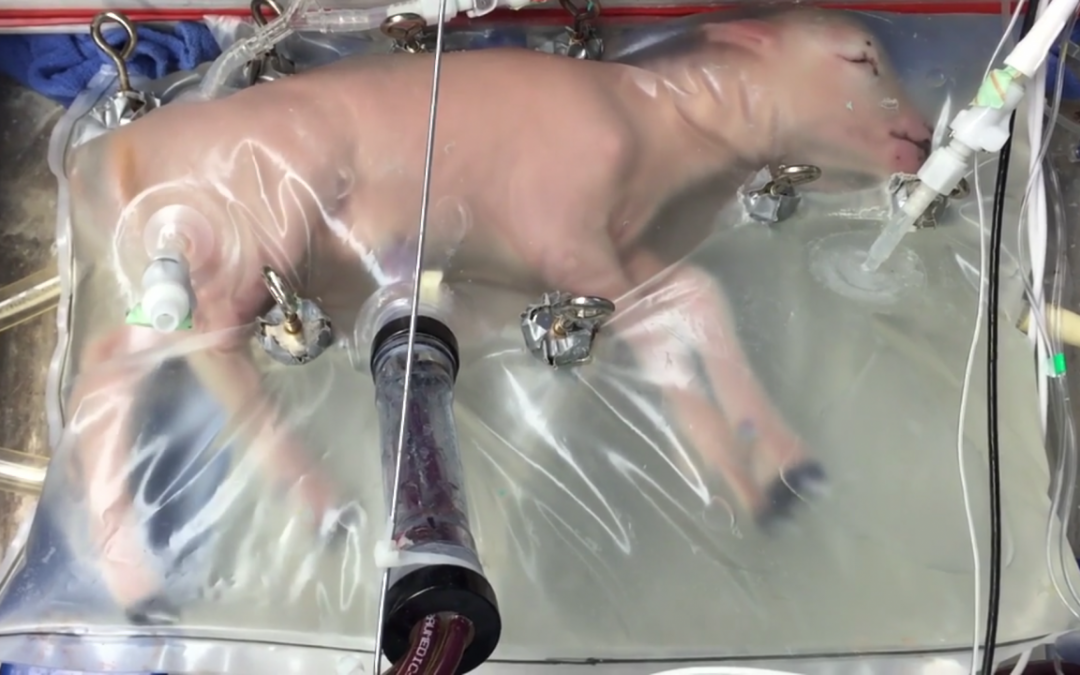Scientists have created a new technology that could potentially act as an artificial womb wherein babies born during the second trimester could not only be kept alive but potentially develop until fully healthy and independently viable, Stat reported Tuesday.
This experimental artificial womb — “the biobag” — is a large plastic bag filled with fluid and kept in a state that mimics the inside of a uterus. The umbilical chord is attached to a device that provides the blood with oxygen. The goal is that, after a few weeks in the biobag, the baby could be removed and placed on a ventilator until further developed to the point where they can breath on their own.
Babies born as early as 22 weeks have a 50 percent chance of survival with current technology, but the same devices that save their lives can cause problems that last well into adulthood.
“We know that even a few hours of that [current technology] damages the lungs of a 24-week infant,” says Dr. George Mychaliska, a pediatric and fetal surgeon at C.S. Mott Children’s Hospital. “Our hands are tied, because in the absence of that, the baby would die. So we accept some lung damage to keep the baby alive.”
With this new technology, doctors hope for a much greater chance of survival without developmental problems. While tests have not started on humans as of yet, Mychaliska has tested the technology on prematurely born lambs. “The duration of support is outstanding,” he said.
Scientists predict that human testing is at least three years away, but the technology will face its own problems. Umbilical chords shrink the moment they are hit by air, Stat reported, making it difficult to fit tubes into them. Stat also noted that the artificial uteri can easily be contaminated with infections, and the fetal heart is weak and sometimes can’t handle artificially having blood pumped into it.
Dr. Alan Flake, a pediatric and fetal surgeon at the Children’s Hospital of Philadelphia has begun studies with lambs as well, and described the process to Stat:
In tests on sheep, Flake first slits open the uterus as if he were performing a caesarean section. Then, he connects an artificial blood-circulation system to the ends of the umbilical cord. Finally, he takes out the tiny lamb, umbilical cord included, and places it into the biobag, which is filled with a brew of electrolytes. The entire process takes about two minutes, he said.
A video demonstrating part of Flake’s lamb experiment has been released. In it, you can see the premature lamb in the biobag, being artificially gestated.











